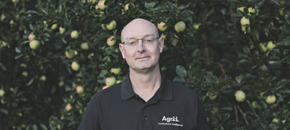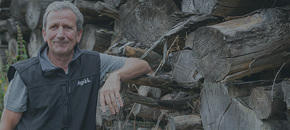Rethinking Grassland Fertiliser as Animal Feed
In this episode, we are talking to Peter Scott technical director from Origin Fertilisers and Ben Lowe national forage manager from Agrii.
What can farmers do to balance their input costs with improving their grassland performance?
What does that mean for the livestock enterprise?
And how can we rethink grassland fertiliser as animal feed?
This Episode Features:

Tony Smith
Your Tramlines Host
Ben Lowe
National Forage Product Manager

Peter Scott
Technical Director, Origin Fertiliser
Rethinking Fertiliser as Animal Feed
Tony Smith (Host):
Peter, can you start by telling us more about the use of fertiliser on UK grassland?
Peter Scott:
Grass is the largest single crop area in the UK, covering about 6.5 million hectares of managed grass, excluding rough grazing. This accounts for around 30% of the total fertiliser market, which equates to approximately 1 million tonnes of fertiliser, costing grassland farmers around £500 million annually. I believe we need to rethink the narrative and start considering fertiliser as animal feed rather than just plant food.
Analysing Inputs for Grassland
Tony Smith:
Where should farmers start in terms of analysing their grassland and inputs?
Peter Scott:
Farmers need to analyse everything—soil, grass, silage, and manures or slurries. This comprehensive analysis will provide the data required to create a nutrient management plan and ensure they are applying the right amounts of each nutrient to their fields.
Tony Smith:
Ben, how many grassland farms are currently carrying out this level of analysis?
Ben Lowe:
Traditionally, not enough farms have done this, but the rising costs of inputs like fertiliser and feed have drawn attention to the need for better quantification. More farmers are now analysing their soils and forage to optimise their input strategies, which is leading to improved performance.
Timing and Benefits of Analysis
Tony Smith:
When should farmers start analysing their grassland?
Peter Scott:
The beauty of grassland systems is that you can start at any time. Begin with soil analysis, especially if it's been more than five years since your last test. Analyse slurries before application, and take samples of fresh grass or silage for nutrient analysis to understand your grass's quality.
Tony Smith:
How does this analysis help farmers do things differently, and what benefits can it bring?
Peter Scott:
By treating fertiliser as part of the animal feed system, farmers can improve both the quantity and quality of grass. For example, using the right balance of nitrogen and sulphur can increase protein levels, while adjusting mineral balances can enhance digestibility and nutrient intake, leading to healthier livestock and better production outcomes.
Improving Grass Quality for Silage and Grazing
Tony Smith:
Is this approach just as relevant for grazing as it is for silage production?
Peter Scott:
Absolutely. For grazing, applying fertilizer little and often is key to ensuring that you’re growing the right amount and quality of grass. You also need to maximise grass utilisation by improving palatability and nutrient balance. Simple adjustments, like adding sodium, can increase dry matter intake and sugar content in the grass.
The Impact of Balanced Nutrition on Livestock
Tony Smith:
How can rethinking grassland fertiliser make a difference for livestock performance?
Ben Lowe:
Focusing on balanced nutrition can lead to significant reductions in bought-in feed, which is a major cost for livestock farmers. By getting the most out of home-grown forage—both in terms of yield and quality—farmers can improve their livestock’s performance and health while reducing feed expenses.
The Role of Balanced Nutrition in Grassland Fertiliser
Tony Smith:
What role does balanced nutrition play in improving grassland quality?
Peter Scott:
While nitrogen is essential for driving grass growth, we must also focus on other nutrients like sulphur, potassium, calcium, magnesium, and sodium. These nutrients improve the quality of the grass, making it more nutritious for livestock. A balanced approach helps avoid issues like grass staggers, which is caused by an imbalance of potassium and magnesium.
Scientific Evidence Supporting Grassland Nutrition
Tony Smith:
How do we know that this approach works scientifically?
Peter Scott:
Research, such as a study from the University of Bangor, has shown that adding sodium alongside nitrogen can lead to quantifiable benefits, such as increased dry matter intake, improved animal health, and a 9% increase in milk output. This highlights the importance of balanced nutrition in grassland management.
Takeaways for Livestock Farmers
Tony Smith:
What would you encourage livestock farmers to do differently after listening to this advice?
Ben Lowe:
Farmers should maintain the attention to detail they’ve developed over the past year. By balancing the nutritional needs of their grassland with the same care they give to livestock rations, they can improve grass quality and reduce input costs, leading to better overall performance on the farm.
Tony Smith:
What is your key takeaway for farmers when it comes to rethinking grassland fertiliser?
Peter Scott:
I would urge farmers to stop and think before making fertiliser purchases. The most expensive fertiliser is the wrong fertiliser. Take the time to analyse your soil, grass, and manures, and use that data to make informed decisions about which fertiliser will improve your grass quality and livestock performance.
The Agrii Guide to Grass and Roots is now available.
Download the brochures below:

Grass and Roots
For England, Wales & NI

Grass and Roots Scotland
For Scotland
Related episodes
Feeding the Roots
Episode 11Future-Proofing Forage
Episode 9The Ripening Story of British Blackcurrants in a Changing Climate
Episode 8Rooted in Nutrition: Soil Health and Smarter Inputs
Episode 4Seed Success: Understanding Treatments, Science & Innovation
Episode 20The Reality of SFI: Part 2 - The What, Where and How?
Episode 19Smart Nutrition: Maximising ROI on Phosphate, Potash & Nitrogen
Episode 18Carbon Trading - The Reality
Episode 12Integrated Pest Management and Beneficial Insects
Episode 11Never miss an episode of Tramlines








